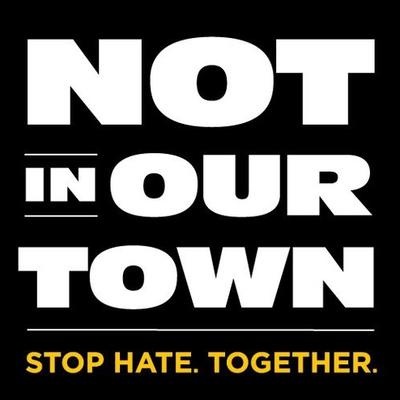In their respective work, Granovetter and Burt explore roughly the same phenomenon –heterogeneous connection patterns within a social network. However, they each choose different metaphors to describe that phenomenon, leading to differences in how one should understand and interpret social network structure.
Perhaps most famously, Granovetter argues for the ‘strength of weak ties,’ finding that it is the weak, between-group ties which best support information diffusion – as studied for the specific task of finding a job (Granovetter, 1973). For his part, Burt prefers to focus on ‘structural holes’: rather than considering a tie which spans two groups, Burt focuses on the void it covers. As Burt describes, “The weak tie argument is about is about the strength of relationships that span the chasm between two social clusters. The structural hole argument is about the chasm spanned” (Burt, 1995). Burt further argues that his concept is the more valuable of the two; that ‘structural holes’ are more informative than ‘weak ties.’ “Whether a relationship is strong or weak,” Burt argues, “it generates information benefits when it is a bridge over a structural hole.”
While Granovetter’s weak tie concept pre-dates Burt’s structural holes, his paper implies a rebuttal to this argument. Illustrating with the so-called ‘forbidden triad,’ Granovetter argues that in social networks your friends are likely to be friends with each other. That is, if person A is strongly linked to both B and C, it is unlikely that B and C have no connection. Granovetter finds this forbidden triad is uncommon in social networks, arguing that “it follows that, except under unlikely conditions, no strong tie is a bridge.” This implies that Granovetter’s argument is not precisely about identifying whether a relationship is strong or weak, as Burt says, but rather it is about identifying bridges over structural holes. It is merely the fact those bridges are almost always weak which then leads to Granovetter’s interest in the strength of a tie.
This seems to indicate that there is little difference between looking for weak ties or for structural holes: what matters for successful information exchange is that a hole is bridged, and it is only a matter of semantics whether you consider the hole or consider the bridge. Yet in Burt’s later work, he further develops the idea of a hole, building the argument for why this mode of thinking is important. He describes French CEO René Fourtou’s observation that the best ideas were stimulated by people from divergent disciplines. “Fourtou emphasized le vide – literally, the emptiness; conceptually, structural holes – as essential to coming up with new ideas: ‘Le vide has a huge function in organizations…shock comes when different things meet. It’s the interface that’s interesting…If you don’t leave le vide, you have no unexpected things, no creation.’” (Burt, 2004)
It is this last piece which is missing from Granovetter’s conception – Granovetter argues that bridges are valuable because they span holes; Burt argues that the holes themselves have value. You must leave le vide.
Hayek writes that the fundamental economic challenge of society is “a problem of the utilization of knowledge not given to anyone in its totality” (Hayek, 1945). If you consider each individual to have unique knowledge, the question of economics becomes how to best leverage this disparate knowledge for “rapid adaptation to changes in the particular circumstances of time and place.” With this understanding, any network which effectively disseminated information would be optimal for solving economic challenges.
Imagine a fully connected network, or one sufficiently connected with weak ties. In Granovetter’s model – assuming no limit to a person’s capacity to maintain ties – such a network would be sufficient for solving complex problems. If you have full, easy access to every other individual in the network, then you would learn about job openings or otherwise have the information needed to engage in complex, collective problem-solving. A weak tie only provides benefit if it brings information from another community; if it spans a structural hole.
In Burt’s model, however, such a network is not enough – an optimal network must contain le vide; it must have structural holes. Research by Lazer and Friedman (Lazer & Friedman, 2007) gives insight into how these structural holes add value. In an agent-based simulation, Lazer and Friedman examine the relationship between group problem-solving and network structure. Surprisingly, they find that those networks which are most efficient at disseminating information – such as a fully connected network – are better in the short-run but have lower long-term performance. An inefficient network, on the other hand, one with structural holes, “maintains diversity in the system and is thus better for exploration than an efficient network, supporting a more thorough search for solutions in the long run.” This seems to support Burt’s thesis that it is not just the ability to bridge, but the very existence of holes which matter.
There are, of course, drawbacks to these structural holes as well. Burt finds that structural holes help generate good ideas but – as the work of Lazer and Friedman would imply – hurts their dissemination and adoption (Burt, 2004). So it remains to be seen whether the ‘strength of structural holes,’ as Burt writes, is sufficient to overcome their drawbacks. But regardless of the normative value of these holes, Burt is right to argue that this mode of thinking should be side-by-side with Granovetter’s. For thorough social network analysis, it is not enough to consider the bridge, one must consider the chasm. Le vide matters.
___
Burt, R. S. (1995). Structural Holes: The Social Structure of Competition: Belknap Press.
Burt, R. S. (2004). Structural holes and good ideas. American journal of sociology, 110(2), 349-399.
Granovetter, M. S. (1973). The strength of weak ties. American journal of sociology, 1360-1380.
Hayek, F. A. (1945). The use of knowledge in society. The American economic review, 35(4), 519-530.
Lazer, D., & Friedman, A. (2007). The network structure of exploration and exploitation. Administrative Science Quarterly, 52(4), 667-694.






